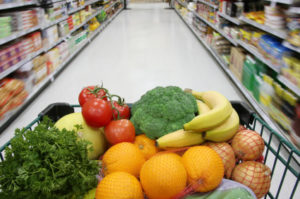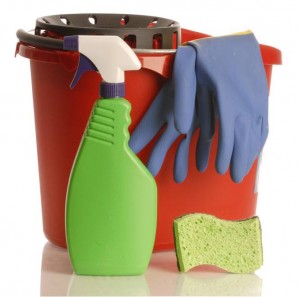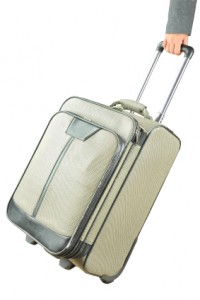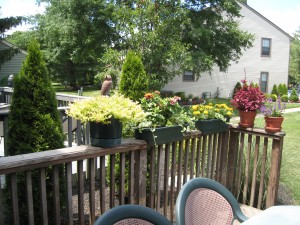 Let’s take a brief trip down memory lane. What was it that initially attracted you to your spouse? Perhaps you fell for his outgoing, life-of-the-party personality. Maybe you were drawn to her gifted, creative nature. In those initial stages of love, you possibly detected his or her organizing limitations but those flaws were a small price to pay to be with the one you loved.
Let’s take a brief trip down memory lane. What was it that initially attracted you to your spouse? Perhaps you fell for his outgoing, life-of-the-party personality. Maybe you were drawn to her gifted, creative nature. In those initial stages of love, you possibly detected his or her organizing limitations but those flaws were a small price to pay to be with the one you loved.
Fast forward a year — or maybe twenty — and you are at your wits end. Why is it so difficult for her to keep the house straight? Why does he leave his stuff everywhere? Your spouse’s disorganization is putting a serious strain on your relationship.
We, who are naturally organized, are mystified by others who struggle in this area. We seldom run late, we rarely lose things, and our homes have always been relatively organized. We take our innate organizing skill for granted. After all, how difficult is it to keep a tidy home, go through the mail, or clear out a closet?
Studies have found the more creative a person, the more organizationally challenged. So, may I be so bold as to suggest that it probably is not just your spouse’s disorganization that is causing a strain in your relationship. Could it possibly be your own willingness to accept that something so simple to you doesn’t come so easy to him or her?
We live in a society that places high value on being organized. A lack of organization costs us both financially and emotionally. Your spouse most likely feels a sense of shame, guilt, and embarrassment for not having their organizing act together. They desire to get organized; they just don’t know how.
Enter the professional organizer. Our purpose as organizers is not just to help you (or your spouse) tidy up, but to transfer and impart those ‘oh so needed’ organizing skills. An effective organizer encourages you to let go of the excess in your home, strategizes with you to plan the best organizing systems for your space, and ensures that you have learned how to maintain a structure and order that works for you both.
So, the next time you feel tempted to nag your spouse over the mess in your home, focus on all those wonderful qualities that drew you together, and consider the value of a professional organizer. We may not be able to solve all your marital woes, but we can surely help when organizing opposites attract.
 When trying to save time and money at the grocery store, the first step is to start with your menu plan. Plan your meals by making a weekly menu. Of course you can also do bi-monthly or monthly if you feel so inspired, but if this is a new process start with a week until you get comfortable with this idea.
When trying to save time and money at the grocery store, the first step is to start with your menu plan. Plan your meals by making a weekly menu. Of course you can also do bi-monthly or monthly if you feel so inspired, but if this is a new process start with a week until you get comfortable with this idea.
For each day of the week, plan what your meals will be including breakfast, lunch, snacks, and beverages. Now check to see if you have written any specialty recipes down that may require additional ingredients such as spices, etc. Start making your grocery list based upon your menu.
Check your pantry and make sure you have all of the ingredients or food items you need to accomplish your meal plan for the week. If you do not, write them down on your grocery list. This way of planning will keep you organized so preparing and cooking your meals will go off without a hitch. Being organized will help to prevent the need to run back to the store for forgotten items or ingredients.
Keep a running grocery list during the week for any supplies that run out or are getting low. Add these items to your grocery list. This is an especially helpful household task for when you have multiple family members. If you used the last of something, put it on the list, do not let the next person needing that item be the one to find out it’s not there when they need it. A detailed grocery list helps you from forgetting items that you may need.
Do you use coupons? If not skip this paragraph. If so, keep your coupons in a file or a convenient place such as your pocketbook. Organize the coupons in the same manner you organized your list; by the order of where those items will be found in the aisles. Check that you are purchasing the exact brand, item, size requirement, etc. from that coupon as you are selecting that item. This will save you time and embarrassment at the checkout counter from choosing an incorrect item. Also check for expiration dates on your coupons.
Now if you want to save time at the grocery store take this list one step further and organize the list based upon the grocery store aisles where you do your shopping. This way you are able to cross items off the list as you go up and down the aisles. This will help you from going back and forth through the aisles if you skip something. It also helps from forgetting items.
To recap:
Planning your menu and grocery list in an organized manner will not only help you become an organized shopper, it will save you time and money as well. Happy Shopping!
Finding the time and energy to garden has been a challenge for me in the past few years. Our property seems to be getting bigger or am I getting older? Regardless of the reason, I’m not willing to give up the great exercise and satisfaction I get from planting my garden, so I need to get more organized to get it done. I also have to be satisfied with an hour or two here and there instead of a full day of gardening. After I planted my garden last year, I took pictures of the planters and the gardens and made a list of the plants I bought at the local nurseries.
Our garden shed was built on top of an old outhouse and frankly it could withstand a hurricane. It has a waist high counter and wooden shelving. We used leftover linoleum flooring from the kitchen for the floor. It’s just the right size to hold the following:
In the spring:
In the fall after the first killing frost:
After plants have been hit by frost, I like to fill in with fall décor so it doesn’t look so empty. I use some of the more colorful pots I emptied to hold mums and fill in with straw bales, pumpkins, cornstalks and gourds. Organize your gardening so it’s a pleasure, not a chore.
Clutter Tips:
Green Tips:
 I don’t know about you, but spring is my favorite time of year, and the last thing I want to do is spend my weekend or multiple weekends focusing on cleaning and organizing my entire home. Instead of pulling out that long list of spring cleaning duties, consider breaking up the list into bite size pieces to be completed throughout the year.
I don’t know about you, but spring is my favorite time of year, and the last thing I want to do is spend my weekend or multiple weekends focusing on cleaning and organizing my entire home. Instead of pulling out that long list of spring cleaning duties, consider breaking up the list into bite size pieces to be completed throughout the year.
Maintenance is a much easier solution and a tremendous time saver.
Pick Your Battles
Look at your list and determine the cleaning and organizing tasks that make the most sense for this time of year. For example, closets are a great place to start because this is the time of year we change from winter to spring/summer attire. Garages are another good area of focus. Now is the time to put away the snow blower and pull out the lawn mower. And, let’s be honest, things tend to get piled and tossed into the garage all winter, so it’s time for a garage clean-out. Your garden shed is another great fit for seasonal organizing. Inspect and sharpen your garden tools, take stock of your supplies, clean your clay pots and determine your tool storage area based on how often you use the tools. Also, with the onset of warmer weather comes the need to change to lighter blankets and comforters, and once the bed is stripped you can vacuum and turn the mattress to complete the process.
Maintenance is Key
Now that you have decided which areas make sense to organize during the spring season; let’s break the rest of that cleaning and organizing list into manageable tasks to be completed throughout the year. Baseboards, doors, and cobwebs can be dusted and cleaned during the winter when you’re stuck inside during a snowstorm. Lampshades and ceiling fans can be dusted at regular intervals when you dust the rest of your home. Draperies, blinds and carpets can be cleaned in the fall or the end of the summer. Many people have self cleaning ovens that can be cleaned any time of the year, and grease traps and stove filters are easy to replace or clean on an as needed basis.
Consistency is the Name of the Game
Having a consistent, year round routine will help you avoid investing large chunks of time in the spring. Instead, get out and smell the forsythia, spend time with family and friends, or do whatever makes you happier at this wonderful time of year. Organizing and cleaning are necessary for a functional life, so finding ways to spread it out and make it easier in the long run will save you endless hours each season.
 There are a few basic components of your vacation you need to consider before you select certain articles and start to pack. If you are traveling by air, be aware of your carrier’s baggage restrictions. This is the time to be efficient with your space! Below are my 20 tips to help you pack like a pro:
There are a few basic components of your vacation you need to consider before you select certain articles and start to pack. If you are traveling by air, be aware of your carrier’s baggage restrictions. This is the time to be efficient with your space! Below are my 20 tips to help you pack like a pro:
Now zip your suitcase and go! Bon Voyage!
 The weather is finally starting to cooperate, and I am in my ‘container garden’ mode- of- thinking. This is the perfect time to talk about outdoor organizing, as I am in the process of gathering all of my gardening essentials (potting soil, pots, gardening gloves, watering can, etc) to plant my flowers.
The weather is finally starting to cooperate, and I am in my ‘container garden’ mode- of- thinking. This is the perfect time to talk about outdoor organizing, as I am in the process of gathering all of my gardening essentials (potting soil, pots, gardening gloves, watering can, etc) to plant my flowers.
Whether you live in an apartment, condo, or single family home, you should organize your outdoor items such as your gardening tools, lawn equipment, and/or outside furniture. Sorting like items together allows you to know what you have, which in turn will help you to know what you may need to purchase, as well as to help you find things more easily.
Below are my three Outdoor Organizing Tips:
Take advantage of this glorious weather to plant. Then, all you’ll need to do is to sit back, relax, and enjoy the longer days of summer. Some of the best parts are being able to barbecue and to watch your flowers and plants grow.